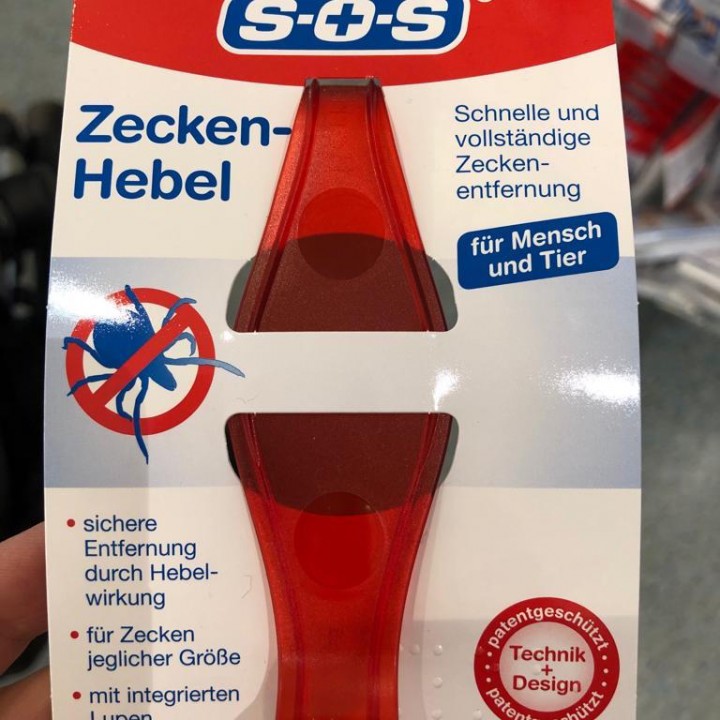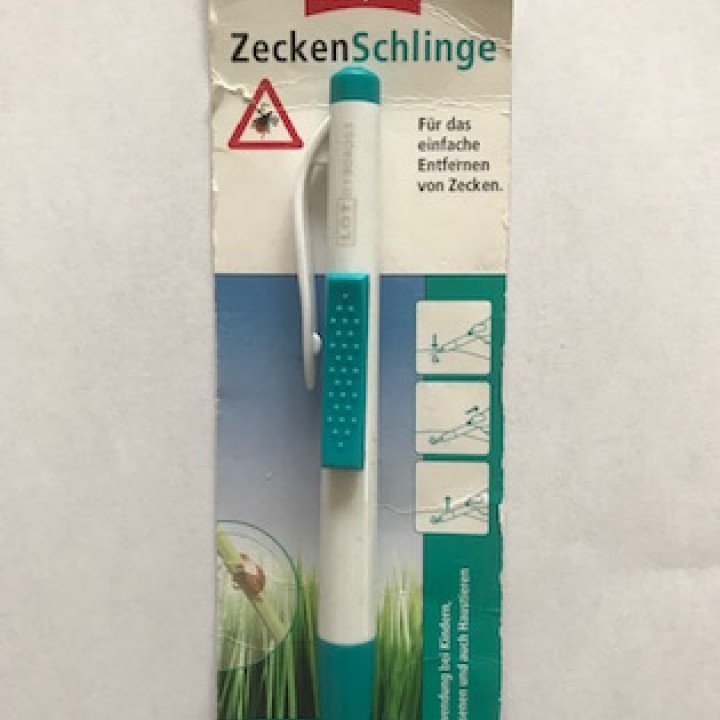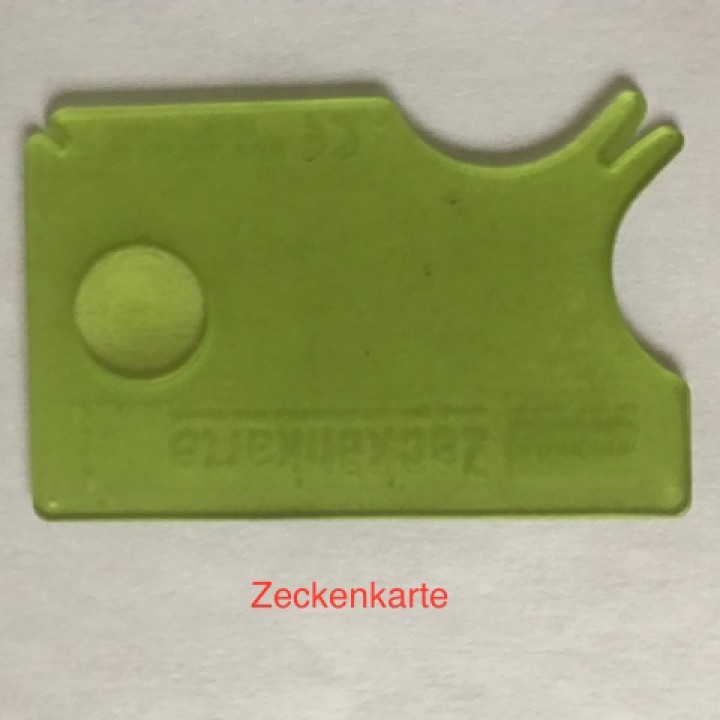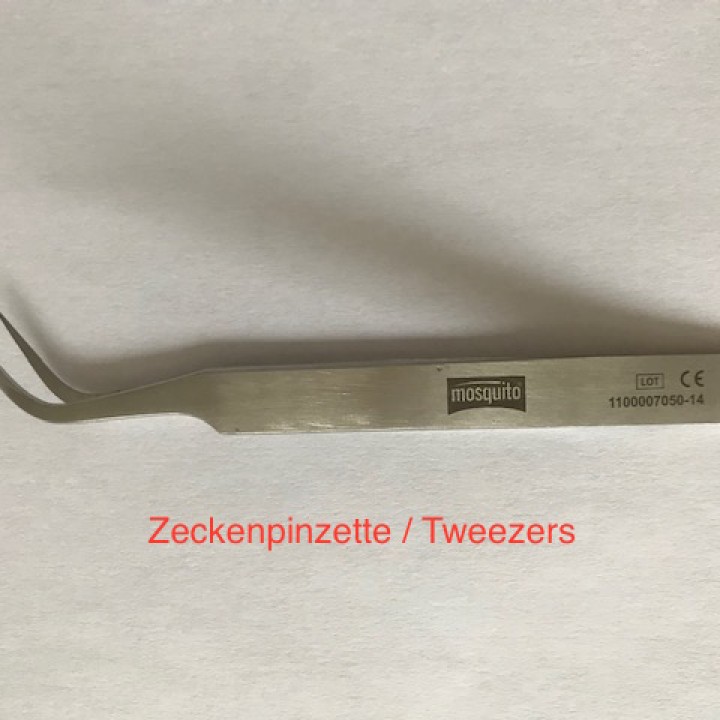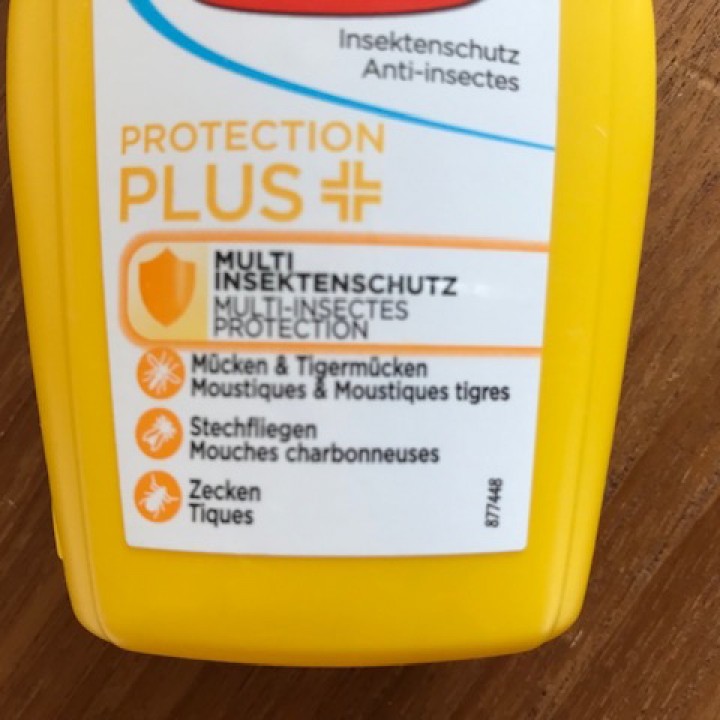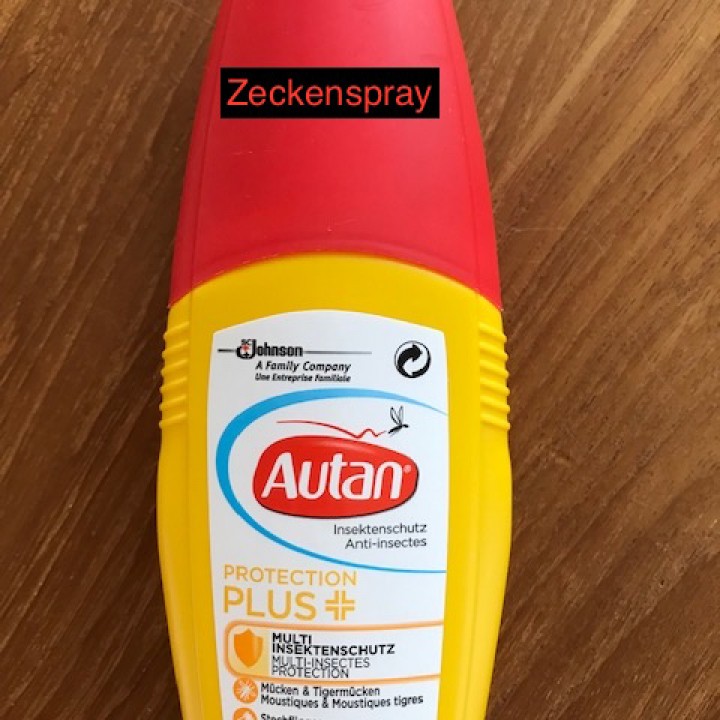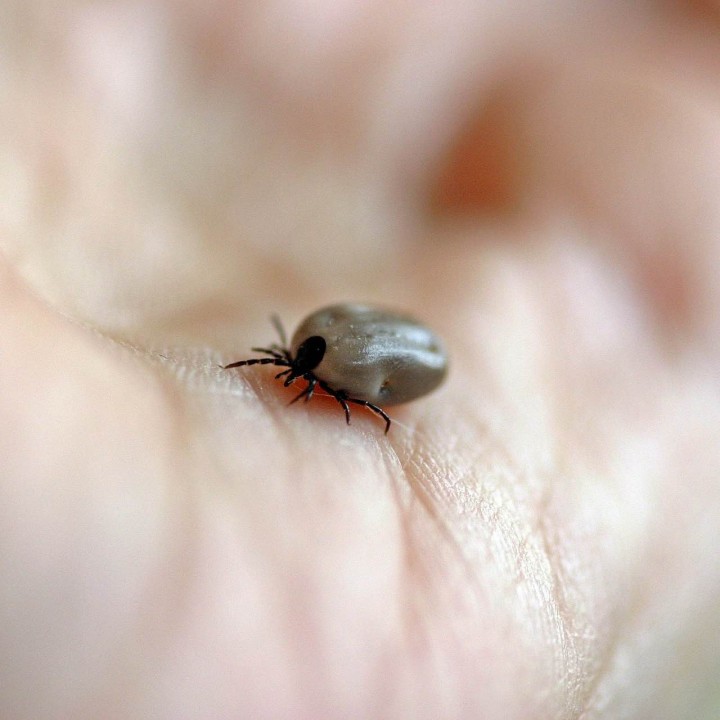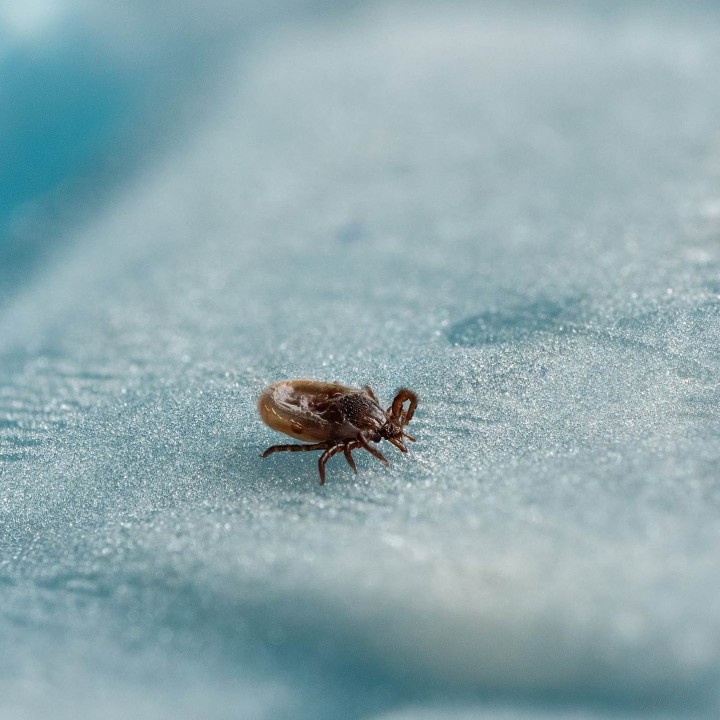TICKS - UGH - BORRELIOSE/LYME and FSME
or what you need to know about ticks.
We personally do not like ticks, but we need to know about them.
They CAN transmit two diseases - but our doctors always tell us not to panic...
FSME (early-summer meningoencephalitis) is a tick-borne viral disease that can occur in a variety of stages. In 2017, 476 clinical cases were reported in Germany. There is a vaccination available.
Lyme Disease or Borreliose is a disease caused by infection with Borrelia burgdorferi (Borrelia) bacteria. Only a small part of the infected get sick. In total, 0.3 to 1.4% of tick bites are expected to be associated with disease symptoms.
At the end of the medical part, we will let you know how to remove ticks and how you can protect yourself as good as possible against ticks.
The FSME virus is primarily transmitted from ticks to humans.
The risk of developing FSME after being bitten by a tick in the risk areas is estimated to be as high as 1 in 150. But not every infection leads to a disease: Of the people who are stung by a tick infected with FSME virus, about every third person falls ill. In all the others cases the infection runs without noticeable signs of disease. On the following card you can see the risk areas where FSME is a danger. https://www.rki.de/DE/Content/InfAZ/F/FSME/Karte_Tab.html
The FSME virus is in the saliva of the tick. After the sting, they can immediately enter the the body. Even removing a tick immediately after the sting does not protect against the infection. However, the longer the tick sucks, the higher the risk of becoming infected.
A FSME patient typically experiences the course of the disease in two stages. Stage I: Typical initial symptoms are fever, headache and body aches, similar to a summer flu. If the body is strong enough it will fight the virus and it is over. Stage II: In a few of the infected, the virus attacks the central nervous system. Symptoms can be high fever, headache and often a stiff neck. In some cases FSME can cause a brain and spinal cord inflammation. And late effects can be often seen.
FSME cannot be treated casually. Because the virus can not be controlled with medication, the treatment is limited to alleviating the symptoms!
The Committee on Vaccination (STIKO) recommends that all residents of risk areas and those who travel to them and come in contact with ticks get vaccinated against FSME! For a multi-year vaccination against FSME three vaccinations are needed. The first two take place every 1 to 3 months, the third - after 5 to 9 months depending on the FSME vaccine. After that is a first refresher after 3 years. Children from 3 years old can be vaccinated.
You can go to your pediatrician or to your Hausarzt (general practitioner).
Lyme Disease or Borreliose
The illness is also transmitted to humans through tick bites.There is no direct human-to-human infection possible. The disease can affect various organ systems, especially the skin, the nervous system and the joints. So far there is no vaccination available. Lyme disease can be treated with antibiotics and they usually work well. The earlier it is detected the better the chances to come out of this unharmed.
To be infected, the tick must suck for a longer time before the pathogen is transmitted. The risk of infection increases after a suction time of more than 12 hours. The transmission risk is very low, if you remove the tick at an early stage.
Symptoms that can help identify Lyme disease vary a lot - some of them are also seen in other diseases. This makes it difficult to diagnose Lyme disease. A characteristic Lyme disease symptom is the wandering redness ("erythema migrans"). This annular erythema may be observed around the puncture site several days to weeks after a tick bite.
However, it does not occur in all Lyme disease patients. In the early stages of borreliosis, in addition to the wandering red, general symptoms such as fatigue, fever and headache are also observed.
Thereafter, various symptoms of severe pain, heart problems and meningitis can occur. Also facial paralysis can be seen. In chronic late stages also often occur joint inflammation, which can be long-term consequences of Lyme disease.
Practical tips & protection against ticks
Most important is to remove ticks as soon as you see them. So always carry a “tool” for removal around.
From spring on screen yourself and your kids every day if you have been out in nature. Especially after having been in high grass or fields as the ticks like to wait there to be swiped off. Then they crawl for a little bit around before they bite. Their favorite spots are the hollow of the knee, arm pits, the groin...but again you need to screen everywhere. Just include this as a game in your evening routine.
In the pharmacy and in the drugstore you can also buy “Zeckenspray” - it is usually a spray that also helps for other blood suckers like mosquitos. It usually protects for 4-6 hours. If you have little kids, check with the staff in the pharmacy which one is applicable. You can spray it on your clothes and skin (careful of the eyes, do no breathe it in)
We usually spray it in our hands and then spread it on the skin.
It is also helpful to wear light colored long pants and tops, as you can see the ticks immediately and they have a harder time to find a way to the skin.
How to remove ticks?
If you are unsure, you can always go to a doctor.
There are several “tools” you can buy in a pharmacy or drugstore. We always carry one around in summer. Most important is not to squish the tick and to get the head out. So you either do this by leverage (Zeckenzange or Zeckenhobel) or by pulling the tick out straight with a pair of tweezers or the Zeckenschlinge. Just do it slow and do not panic…
After you removed the tick, disinfect and please remember the exact area of the bite. Perhaps you can circle it with a pen. You must control the area several days if you see an infection or a red circle, you should visit a doctor immediately.
Here at the top tips (also with pictures) from the Apotheken Umschau - a magazine you get at the Pharmacy:
Detaching the tick: this is how it works
When they bite, ticks anchor themselves in the skin with the help of small barbs on their proboscis. In addition, they secrete a kind of cement with which they stick to the skin. When pulling them out, you therefore have to overcome a certain resistance. The most important thing in advance: You cannot remove a tick "wrong". The only wrong thing would be not to remove it. The easiest way is to use pointed tweezers or a special tick card, tick tweezers or tick snare. You can get these tools at the pharmacy, for example. In a pinch, you can also use your fingernails.
With the tweezers, pliers or snare, grasp the tick as close to the skin as possible and pull it vertically out of the skin in a controlled motion - courageously, but still carefully. With tweezers, it can be a little easier if you carefully twist the tick back and forth and gently jiggle it before pulling. You do not have to turn the tick. Try to squeeze the tick as little as possible.
With a tick card, the technique is slightly different. You do not have to actively pull, but remove the tick in a pushing motion. Insert the card with the slit as close to the skin as possible under the animal and push it gently until the tick comes off.
Forget "home remedies"
Do not drip oil, nail polish remover, alcohol or glue on the tick. These substances will not kill the tick, but will increase the likelihood that the animal will vomit into the puncture site, thus transmitting bacteria and viruses all the more.
Search the rest of the body
Where a tick has bitten, there may be other ticks of the same species. Therefore, always search the entire body and, in the case of children, especially the head for other ticks.
How to dispose of the tick safely
Once you have caught a crawling tick or successfully removed a sucking specimen, you should render the animal harmless without coming into contact with its body fluids. You can safely do this, for example, by placing the tick in high-proof alcohol or disinfectant. It is also recommended to place the tick in a piece of paper and crush it with an object (such as a drinking bottle or a glass). Burning the tick has also proven to be effective.
What you should not do
Do not flush the tick down the toilet. They are very hardy and will even survive a 40 degree wash in the washing machine. Also, do not try to squash them with the heel of your shoe. This often does not succeed, because ticks have a hard shield that protects them. You should also not crush the tick with your finger. If the animal carries pathogens, you could be infected through micro-injuries in the skin.
Should you send in the tick?
It does not make sense to have a removed tick examined for pathogens such as Lyme disease bacteria or TBE viruses. Even if pathogens are found in the tick, this does not mean that an infection has occurred. Conversely, a negative result does not rule out infection.
Disinfect the bite and observe
After a tick bite, you should keep an eye on the skin site for about six weeks. It is normal that it reddens immediately after the bite. However, this redness should subside within a few days.
When to see a doctor after a tick bite?
It happens again and again that you do not catch the tick completely and parts of the animal remain in the skin. Do not panic! Mostly these are only remains of the biting apparatus, not the head of the tick. With regard to the transmission of Borrelia or TBE viruses, the remaining tick parts are harmless. Often the body repels the foreign bodies on its own over time. To be on the safe side, you can also have stuck parts removed by a doctor. Observe whether the area becomes inflamed. If so, see a doctor in any case - if children are affected, sooner rather than later. The tetanus protection should also be checked for every wound.
May 2019 - Updated March 2021
This blog post is a personal recommendation and based on personal experience. It has been prepared with the greatest possible care and does not claim to be correct, complete or up-to-date.“ Picture credit ticks: CatKin and Gerhard Wiedemann of Pixabay.
If you like what we do:
https://www.instagram.com/kiramiga/
https://www.facebook.com/relocationbykiramiga/
https://www.kiramiga.com/en/blog/



